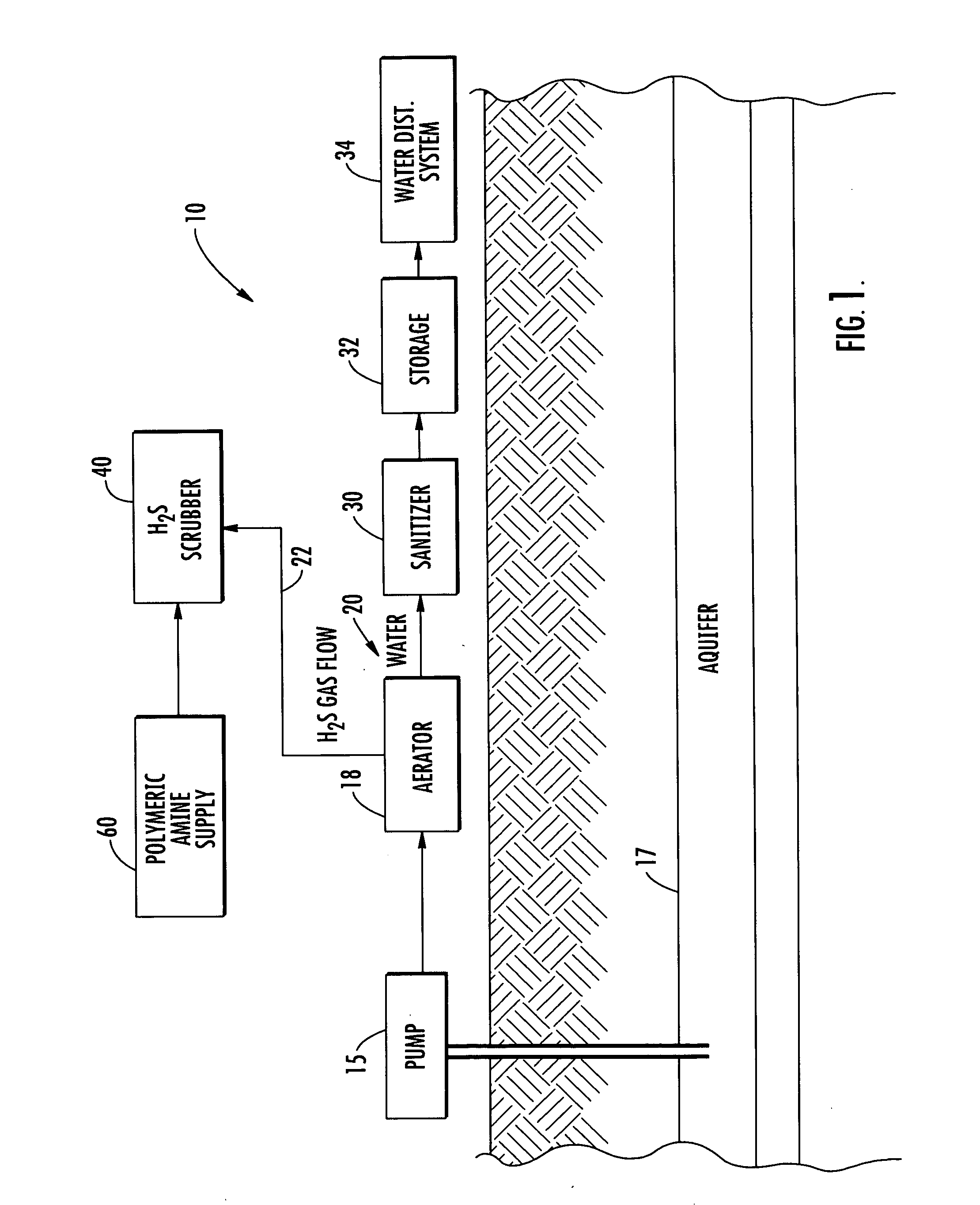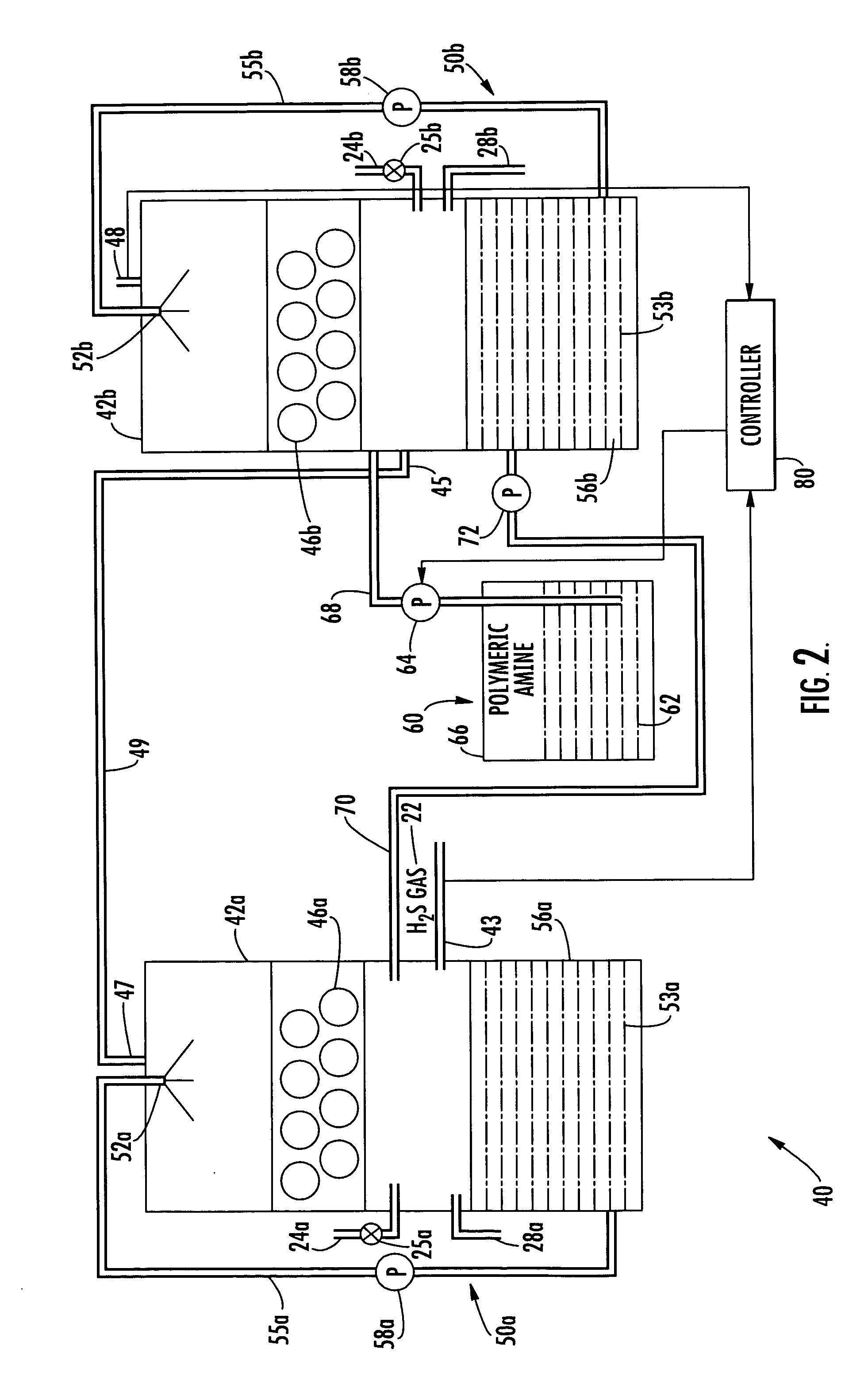Hydrogen sulfide scrubber using polymeric amine and associated methods
a technology of polymer amine and scrubber, which is applied in the direction of hydrogen sulfides, separation processes, sulfur compounds, etc., can solve the problems of annoyance of residents in surrounding neighborhoods, build-up in scrubber tanks, and sludge odor of hydrogen sulfide gas, so as to reduce the release of volatile mercaptans, reduce the build-up, and the effect of cost-effective and relatively straightforward
- Summary
- Abstract
- Description
- Claims
- Application Information
AI Technical Summary
Benefits of technology
Problems solved by technology
Method used
Image
Examples
Embodiment Construction
[0025] The present invention will now be described more fully hereinafter with reference to the accompanying drawings, in which preferred embodiments of the invention are shown. This invention may, however, be embodied in many different forms and should not be construed as limited to the embodiments set forth herein. Rather, these embodiments are provided so that this disclosure will be thorough and complete, and will fully convey the scope of the invention to those skilled in the art. Like numbers refer to like elements throughout, and prime and double prime notation are used to indicate similar elements in alternate embodiments
[0026] Referring initially to FIGS. 1 and 2, a drinking water treatment system 10 is now described. The drinking water treatment system 10 illustratively includes a pump 15 for pumping water from an aquifer 17 that is below ground level. For example, the aquifer 17 may be between 100 and 1000 feet below ground level.
[0027] The drinking water treatment syst...
PUM
| Property | Measurement | Unit |
|---|---|---|
| polymeric amine | aaaaa | aaaaa |
| surface area | aaaaa | aaaaa |
| pH | aaaaa | aaaaa |
Abstract
Description
Claims
Application Information
 Login to View More
Login to View More - R&D
- Intellectual Property
- Life Sciences
- Materials
- Tech Scout
- Unparalleled Data Quality
- Higher Quality Content
- 60% Fewer Hallucinations
Browse by: Latest US Patents, China's latest patents, Technical Efficacy Thesaurus, Application Domain, Technology Topic, Popular Technical Reports.
© 2025 PatSnap. All rights reserved.Legal|Privacy policy|Modern Slavery Act Transparency Statement|Sitemap|About US| Contact US: help@patsnap.com



